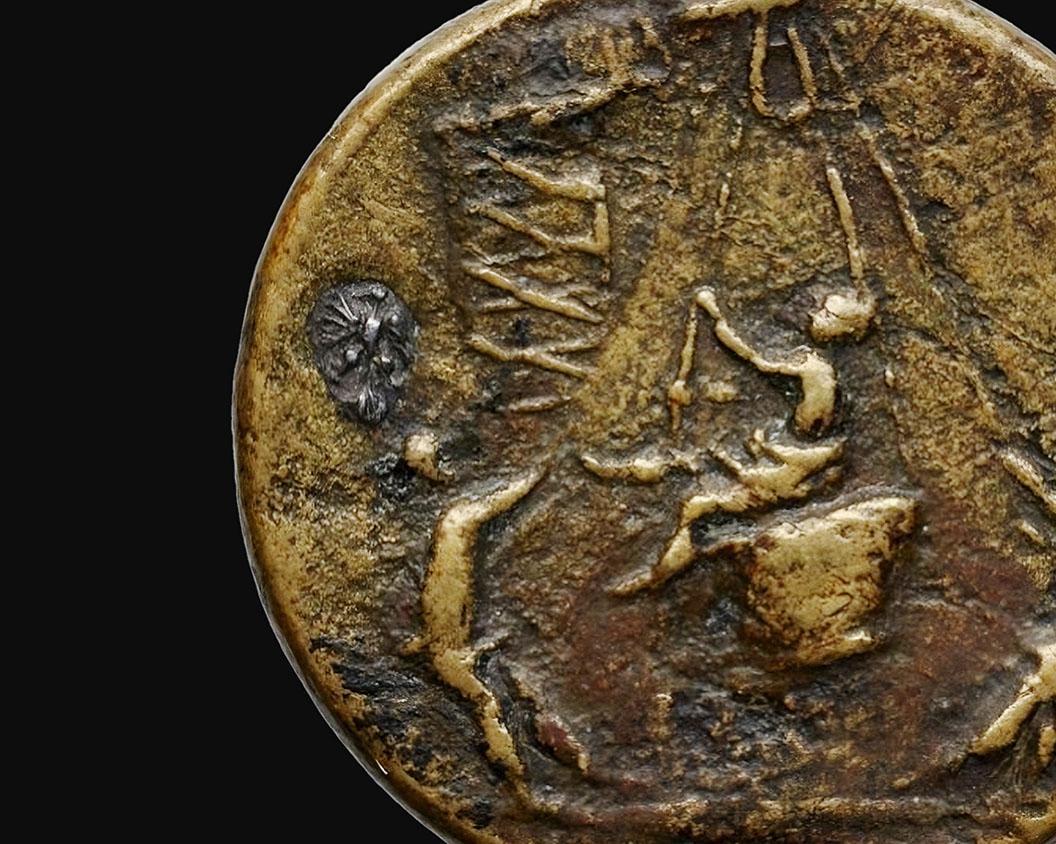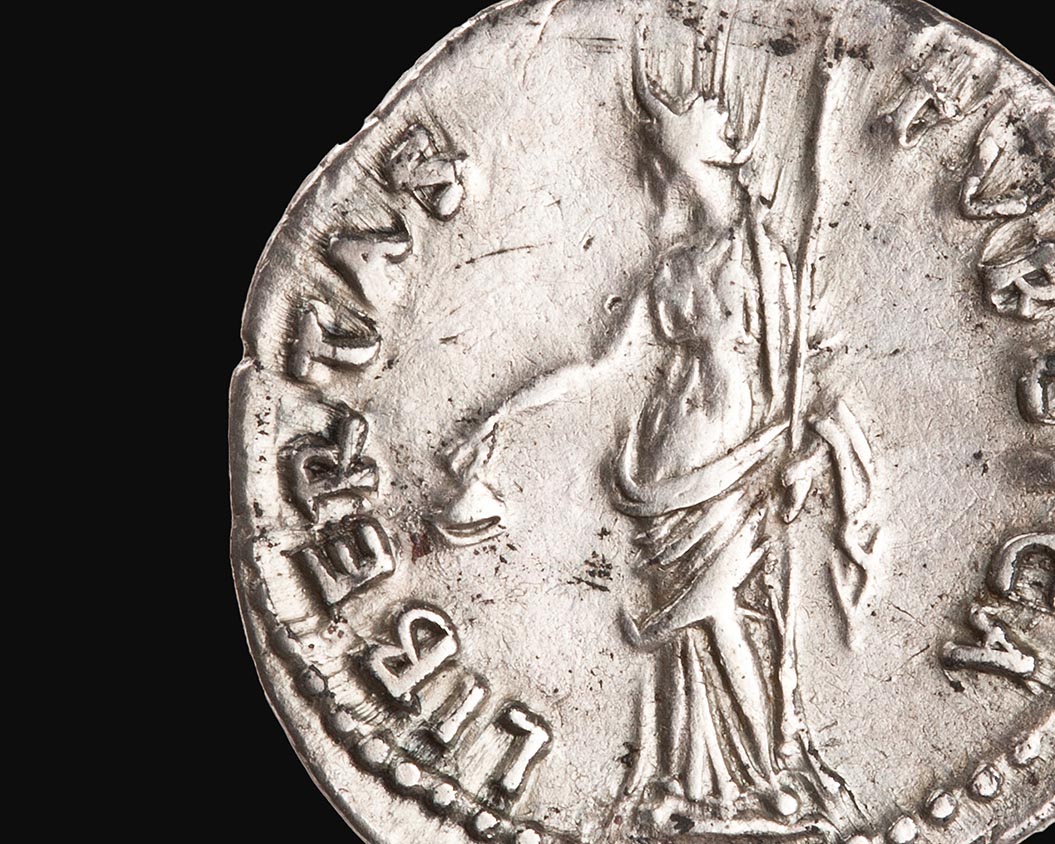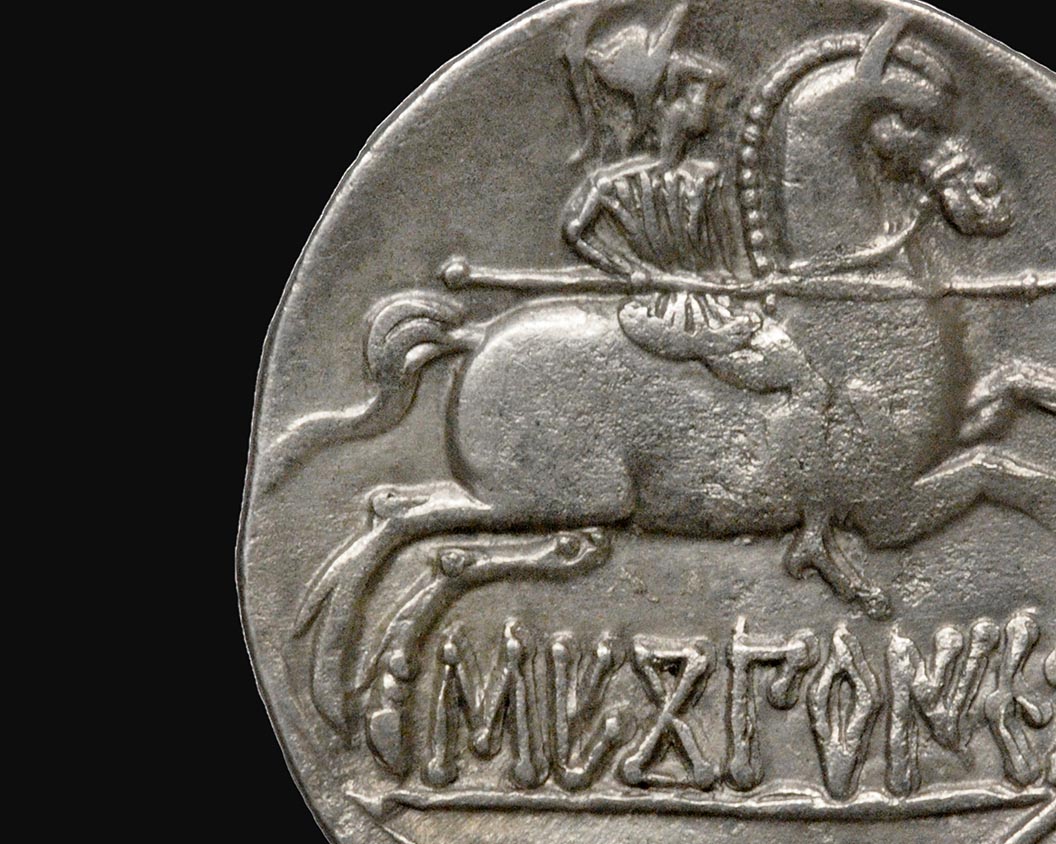Medieval Byzantine and Islamic Empires
Return to Drachmas, Dubloons, and Dollars homepage
The Byzantine emperors in Constantinople struck a gold coin called a solidus, which was the most important trade coin of the early Middle Ages. Under the banner of Islam, proclaimed by Muhammad (571-632), the Arabs conquered Byzantine Syria and Egypt and the Sasanian Empire under the first four Orthodox Caliphs. The Umayyad Caliphs (661-750) extended Muslim power from the Indus to the Atlantic. Early Islamic coinage imitated the Sasanian silver drahm (dirham in Arabic) and the Byzantine gold solidus and copper follis (dinar and fuls in Arabic). In 696, Caliph Abd-al-Malik struck the first Muslim gold dinars and silver dirhams bearing religious inscriptions—the pattern for most subsequent Muslim coinage.
The Reforms of Anastasius I
Constantinople (formerly Byzantium) became the capital of the eastern Roman Empire in 330. The Byzantine monetary system began once Anastasius I (491-518) reformed the old Roman coinage in 498. Coins were now marked with Greek letters (I=10, K=20, M=40) indicating their value in nummi, the smallest monetary unit. The 40-nummus piece was called follis(“purse”) because it had the value of a purse of nummi.
Gold solidus (335) of Constantine the Great from Nicomedia.
Gold solidus (491-498) of Anastasius I from Constantinople.
Bronze nummus (498-518) with the monogram of Anastasius.
Bronze follis (498-518).
Bronze follis (607) of Phocas (602-610) from Cyzicus with a Roman numeral for a value mark.
Bronze half follis (498-518).
Bronze decanummium (498-518).
Bronze half pentanummium (498-518).
The 6th and 7th Centuries
At the height of its power, the Byzantine Empire under Justinian I (527-565) reclaimed areas of Italy, Sicily and North Africa lost to the Goths and Vandals. Heraclius (610-641) pushed back the Sasanian Persian armies of Khusru II (591-628) and restored the True Cross to Jerusalem. However, by the time of Constans II (641-668), the Islamic Arabs had taken over large sections of the Empire.
Bronze follis (538-539) of Justinian I from Constantinople depicting the emperor in military costume.
Gold solidus of Heraclius from Constantinople depicting the emperor and his two sons, Heraclius Constantine and Heraclonas.
Sasanian silver drahm (622) of Khusru II.
Bronze solidus (659-661) of Constans II from Syracuse depicting the emperor (left) and his son, Constantine IV (right).
Symbols of a Christian Empire
Many of the images found on Byzantine coins are derived from Christian religious icons and artwork decorating the great churches and palaces of Constantinople. The rule of the Emperor was believed to be sanctioned by God.
Gold solidus (692-695) of Justinian II from Constantinople depicting Christ Pantokrator and the Emperor holding a cross.
Silver miliaresion (830-838) of Theophilus from Constantinople.
Gold histamenon of the empresses Zoe and Theodora (1042) from Constantinople, depicting the Virgin Mary and the Christ Child.
Gold histamenon of Romanus IV (1067-1071) depicting the Emperor and Empress crowned by Christ.
The Reforms of Alexius I Comnenus
Inheriting a monetary system that had become extremely debased under his predecessors, Alexius I (1081-1118) reformed the coinage in 1092. He replaced the old histamenon with the hyperpyron, a slightly debased gold coin. A new electrum-alloy aspron trachy was valued at one-third of a hyperpyron. Alexius also introduced the small bronze tetarteron which drove the old heavy folles out of circulation.
Gold hyperpyron (1092-1118) depicting the emperor crowned by the hand of God.
Electrum aspron trachy (1092-1118) depicting the Emperor.
Bronze tetarteron (1092-1118) with an image of Christ.
The Venetian Standard
The Byzantine Empire never really recovered after the Crusaders sacked Constantinople in 1204 and established a Latin Empire in formerly Byzantine territory. In 1261, the Palaeologan family returned from exile to rule a diminished Empire, but the glory days of Byzantine economic power were gone. In the 14th century, Byzantine trachys followed the internationally accepted weight standard.
Silver trachy of Andronicus II and Andronicus III (1325-1328) depicting the Virgin Mary and the Christ Child.
Early Islamic Coinage
The first Muslims continued to use the familiar coins of the Byzantine and Sasanian Persian Empires, and made new coins imitating them. Later, in 695, the image of the Caliph was substituted, but it was soon replaced by entirely inscriptional designs.
Silver dirham (662) of the Arab governor ‘Abdullah ibn ‘Amir, imitating a Sasanian drahm of Khusru II.
Copper fals (692-694) imitating a Byzantine follis with Greek and Arabic inscriptions.
Umayyad gold solidus (705-706) from North Africa bearing the Muslim credo in Latin abbreviations.
Umayyad gold dinar (695) depicting the Caliph ‘Abd al-Malik armed with a sword. The image is a response to Byzantine solidi of Justinian II showing the Emperor.
Dirhams and Dinars
In 697, an Islamic coinage was invented based on the gold dinar (from the Roman denarius) and the silver dirham (from the Greek drachma). Images were replaced by words from the Qur’an. For decades, the coinage was anonymous, issued in the name of God instead of an earthly ruler. In 763, the names of the Caliph and his officials were restored to the coinage.
Umayyad gold dinar (700) from Damascus with inscriptions stating, “There is no god but God” and “Muhammad is the messenger of God.”
‘Abbasid silver dirham (750) from al-Kufah, Iraq, with the same inscriptions.
‘Abbasid silver dirham (788) of Caliph Harun Al-Rashid (766-809) from Rayy, Iran. Al-Rashid was the famous Caliph of the Arabian Nights.
Samanid gold dinar (993) of Nuh ibn Mansur (976-997) and Sayyid al-Umara’ Abu ‘Ali from Nishapur, Iran. The Samanids of eastern Iran acknowledged the Caliph as the head of Islam by using ‘Abbasid inscriptions and designs.
The Western Islamic World
In the Islamic West (Spain, Sicily and North Africa), diverse coin designs, such as the Fatimid circle design, were often used to signal independence from the Abbisid Caliphate of the East.
Aghlabid gold quarter dinar (879) of Ibrahim II from North Africa.
Fatimid gold dinar of al-Mustansir (1050), from Egypt. The Egyptian dynasty embraced Shi’ite Islam and refused to recognize the Sunni Caliph.
Spanish gold mancuso (1023), produced by Bonnom, an important Jewish banker, for Ramon Berenguer I, Count of Barcelona. This imitates the popular gold dinar.
Almoravid gold dinar (1142) of Tashfin ibn ‘Ali, from Spain. The Almoravid rulers of Spain signaled their reserve toward the Caliph by describing him on their coins as the anonymous “‘Abbasid Imam.”
Figural Islamic Coins
Traditional Islamic coins use no figural images, but some Turkish and Mughal rulers did produce coins with images, often representing astrological signs. Some of the iconography is derived from coins struck centuries earlier, suggesting the existence of medieval coin collections.
Artuqid Turkish copper fals of Najm al-Din Alpi (1152-1176) depicting the sign of Gemini.
Seleucid silver tetradrachmon of Antiochus VII (138-129 BC) from Antioch, possibly the ancient model for the fals, above.
Rum Seljuk Turkish gold dinar (1200) of Rukn al-Din Sulayman II depicting a Turkish cavalryman.
Rum Seljuk Turkish silver dirham (1242) of Ghiyat al-Din Kaykhusraw II depicting the sign of Leo.
Mughal gold mohur (1623) of Jahangir depicting the sign of Sagittarius.
The Mongols
The Mongol invasion of the Middle East under Genghis Khan (1155-1227) affected Islamic coinage. Iran’s Il-Khan Mongol dynasty introduced decorative frames while retaining the traditional inscriptional style. Multilingual inscriptions were used, reflecting the cultural diversity of the people ruled by the Mongols. Some powerful rulers did not claim authority in their own right, but marked their coins with the names of weak overlords.
Il-Khanid gold dinar (1285) of Arghun Khan.
Il-Khanid silver dirham (1299) of Ghazan Mahmud from Baghdad. The inscription uses Arabic, Mongol and Kharoshthi script.
Timurid silver dirham (1388) of Timur-i-Lenk, “Tamerlane” in Western literature, from Samarkand. The inscription names Mahmud Khan. Ruler of the Mongol Golden Horde, but the three circles in the center of the design identify Timur as the true issuing authority.
Return to Drachmas, Dubloons, and Dollars homepage
Other pages of the exhibit:
[posts_grid columns=”4″ rows=”6″ order_by=”date” order=”ASC” meta=”no” link=”yes” category=”DrachmasDubloonsDollars”]




